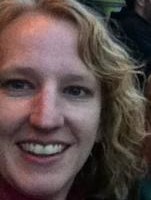Writing: The Practice
Upon opening Natalie Goldberg’s latest book, The True Secret of Writing: Connecting Life with Language, I had a feeling similar to that of sinking into a favorite chair. It’s soft and well worn. It molds to you and meets you where you are—supporting you and lifting you as needed.
Natalie and I go way back—I’ve never met her, and I probably shouldn’t refer to her by her first name, but reading her again is like connecting with an old friend. At once I was in, connected to her familiar voice.
Since my early twenties, I’ve been toting Goldberg’s books around with me—to coffee shops and new apartments, on cross-country moves and while moving into and then out of relationships. Through all of it, her books have offered inspiration and at times, comfort.
The True Secret of Writing offers a new perspective on Goldberg’s writing practice. It is based on the weeklong True Secret workshops she has taught for over a decade. She began the retreats when she realized that “it’s not just writing” that people want. “They want connection; a spiritual longing drives them, a groping for meaning.”
The foundation for the workshops is this: Sit. Walk. Write.
The book is divided into these four parts:
Part One: Basic Essentials outlines the basics of the retreats—silence, meditation, reading group, walking and writing, and also delves into the meaning and benefit of regular practice.
Part Two: True Secret Retreat Essentials sets up the details of the retreats—how to set up an altar, daily schedules, and retreat rules and expectations, including chore assignments.
The final two sections of the book Part Three: Elaborations and Part Four: Encounters and Teachers, answer the question of what it means to be a writer, and at times, what it means to be human.
Each contains personal stories, both Goldberg’s and those of her students, and share insights on writing methods. Here, retreat experiences and some of Goldberg’s personal experiences are fleshed out and interwoven with zen wisdom, reflection, writing prompts and inspiration for your own practice.
Additionally, there are appendices consisting of assigned book lists for the retreat reading groups and the chore sign up sheets.
Though the book is set up to offer the experience of the True Secret retreats, it is done so in such a manner that it can be used however the reader chooses.
Whether you have a week or only an hour, the key, as Goldberg states, is structure: “If you have a good structure, you make room for the mind to drop deeper, the breath deeper, the writing deeper.”
The book is interspersed with teachings from Goldberg’s experiences as well as those of her students. And as always, zen plays a significant role in the book.
Toward the end of the book I found myself floundering a bit—some of the chapters seemed longer than necessary, but overall, Goldberg did not disappoint.
In this book, as in her others, she gives me permission to feel what I feel, to say what I want to say. I’m encouraged to sift through the chaos of my mind until I find a place to rest.
There, I always find myself.
As writers, the hardest thing to do is get our butts to the chair; even harder is putting the pen to page. I consider a writing book successful if it inspires me to do just that. Ultimately, this one did.
But I also found that most of the teachings in the book can be applied to any practice. Whether it’s writing, painting, mediation, running, or whatever you dream up, in its heart, the book is about establishing a practice—any practice—and the rich gift doing so gives us.
“A regular practice is radical. It is not a habit that you get comfortable with, that you don’t even notice you do. The simplest practice if you commit to it regularly, challenges you, cuts through. Even if you choose something of deep pleasure, when you give it structure it changes the game.”
~ Natalie Goldberg
Like elephant Reviews on Facebook.
Assistant Ed: Edith Lazenby/Ed: Bryonie Wise










Read 1 comment and reply